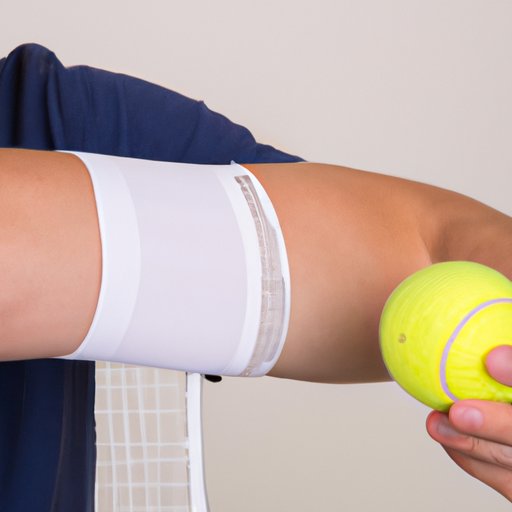I. Introduction
Tennis elbow is a common injury caused by repetitive stress on the elbow joint. Those who participate in activities that involve repetitive arm movements, such as tennis players or weightlifters, are particularly susceptible to this condition. In this article, we will explore some useful tips and strategies for treating this injury and reducing its symptoms.
II. Explanation of Tennis Elbow
Tennis elbow, also known as lateral epicondylitis, is caused by overuse of the forearm muscles that extend the wrist and fingers. The repetitive stress on the elbow joint can cause tiny tears in the tendons that attach to the lateral epicondyle, the bony bump on the outer side of the elbow. This can lead to pain, weakness, and stiffness in the forearm and elbow.
III. Rest and Ice
Rest and ice are often the first methods used to treat tennis elbow. Resting the affected area will allow it to heal and reduce inflammation and pain. Applying ice can also help reduce swelling and pain. Wrap ice in a towel and apply it to the elbow for 15 to 20 minutes at a time, several times a day.
IV. Physical Therapy
Physical therapy is essential in treating tennis elbow. A physical therapist can recommend exercises and stretches that can help restore strength and flexibility to the affected area. They may also use manual therapy techniques, such as massage or trigger point release, to help alleviate pain and promote healing.
V. Steroid Injections
In severe cases of tennis elbow, a healthcare provider may recommend steroid injections to reduce inflammation and pain. The injections can help decrease swelling and allow patients to resume their daily activities. However, there are potential risks associated with corticosteroid injections, such as loss of tissue and weakening of tendons with repeated use.
VI. Alternative Therapies
Alternative therapies, such as acupuncture and dry needling, may help manage pain and promote healing in patients with tennis elbow. Acupuncture has been shown to increase blood flow and reduce inflammation, while dry needling can help improve muscle function and reduce trigger points in the affected area. However, the effectiveness of these therapies may vary depending on the patient and the severity of their injury.
VII. Bracing
Wearing a brace that supports the forearm muscles can help alleviate pain and reduce strain on the elbow joint. Braces come in various forms, including wrist wraps, elbow sleeves, and forearm straps. A healthcare provider can recommend the best brace for each patient’s specific needs.
VIII. Surgery
Surgery may be necessary in severe cases of tennis elbow that do not respond to other treatments. The two most common surgical procedures for tennis elbow are open surgery and arthroscopy. Open surgery involves making an incision in the elbow to remove damaged tissue, while arthroscopy involves using a camera and small tools to perform the surgery through small incisions. Surgery carries the risk of infection, nerve damage, and prolonged recovery time.
IX. Conclusion
Tennis elbow can be a painful and debilitating injury, but there are many treatment options available to alleviate symptoms and promote healing. It is essential to seek medical attention if symptoms persist to prevent further damage to the affected area. By trying different treatment options and working with a healthcare provider to develop a personalized treatment plan, patients can effectively manage their tennis elbow and resume their daily activities.
